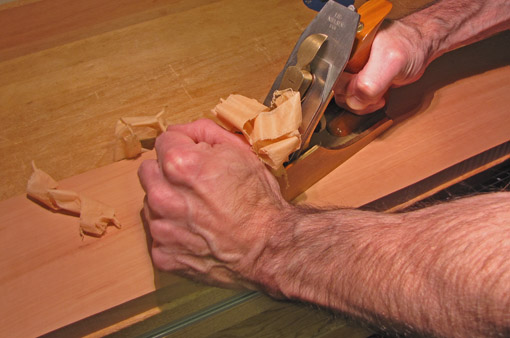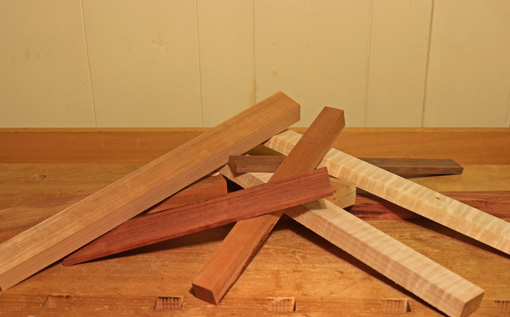
Two projects, a small table and a wall cabinet, now distant memories from 25-30 years ago, occupied a considerable amount of my attention as I endeavored to advance my woodworking skills. They were moderately complex pieces. The table involved blind and through mortise and tenons, and curved legs. The cabinet involved multiple frame-and-panels, doors, drawers, partitions, and lots of dovetails.
The designs were pretty good, the wood selection was very good, and there was a decent amount of good workmanship including lots of clean joinery. Unfortunately, I eventually got stuck with some poor choices in several areas: coordinating the alignment of certain components, assembling parts with work left to be done that was then impossible to do well, delayed decisions on some joinery strategies, and poor selections for pre-finishing the panels in the cabinet.
I could not bring myself to finish these projects. Both lingered, partly assembled, in the shop for a long time because I also could not bring myself to destroy them. Yet, eventually, I did destroy both of them.
Why? It was not a matter of imperfections; all projects have those. It was because I knew these pieces would never have that fundamental rightness that produces joy. Further effort would be drudgery. My consolations were that I learned, and time would better be spent on work with real promise.
This sort of failure can come from a faulty or misunderstood concept, though not in these cases. Rather, in each, I did not understand a path to successfully putting all the aspects together to complete the piece, even though I successfully executed many individual tasks such as joinery. My craftsmanship, while pretty good in many respects, was naive. I could not put it all together, figuratively and literally.
This is the hardest aspect of a woodworking project – all the elements of design and execution must come together. One must map a clear, controlled path to achieve this. This path is ultimately based on a clear vision of a good design concept, and the insightful craftsmanship to carry out that vision.
I guess it is true of any endeavor, work or play – such as jobs, sports, and arts. It’s one thing to learn the components but quite another to put them together and make it flow. With woodworking, however, you see it all before you. There is no hiding, and you know it.
Next: So, what did I learn?




